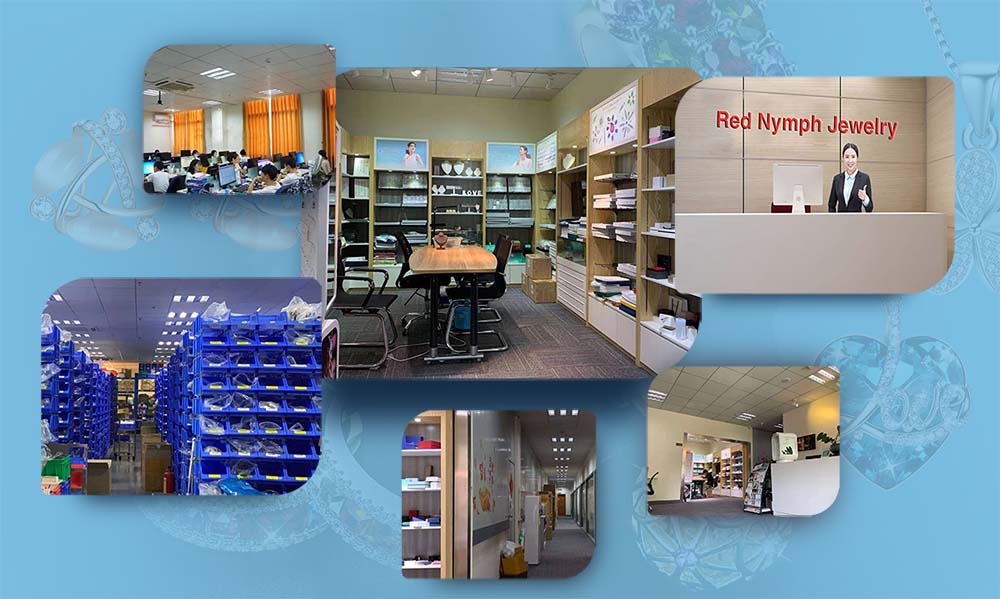
Red Nymph Jewelry
Technology has revolutionized modern jewelry design by offering new tools and techniques that have transformed contemporary jewelry. Technology bridges the gap between traditional craftsmanship and modern innovation to create some stunning pieces.
Historical Context
Diamond Jewelry has been made using a variety of techniques and materials over the years. Two standard methods used throughout history include:
Metalworking: One of the oldest jewelry-making methods is metalworking, which involves shaping metal into various forms. This can be done through casting, where the molten metal is poured into a set mold and then allowed to cool and solidify, or through techniques like forging, where metal is hammered and shaped using tools.
Stone Setting: Stones have been used in jewelry for thousands of years, and technology has improved this process. In ancient times, stones were often bezel set, where a metal collar was folded around the edge of the stone to hold it in place. Modern stones are set using prong settings, where metal prongs are used to secure the stone, and pavé settings, where small stones are set closely together to create a continuous surface of sparkle.
Computer-Aided Design (CAD)
One of the most significant advancements is the use of computer-aided design (CAD) software. This allows designers to create precise, intricate, and detailed designs with accuracy. CAD software also enables designers to easily make changes and adjustments to their designs, speeding up the design process and reducing waste.
3D Printing
Another significant technological development is 3D printing. This technology opened up new possibilities in jewelry manufacturing. 3D printing lets designers create complex and unique designs that would be challenging or unattainable using traditional methods. It’s a technology that’s used to develop prototypes and easily make adjustments to get a final design. It also allows for greater customization so that each piece can be easily tailored to the customer’s specifications. It speeds up the production process and reduces waste.
Laser Cutting and Engraving
Laser cutting and engraving have changed the way jewelry is designed and created. Laser cutting uses a high-powered laser to cut through materials with precision. It makes intricate and detailed designs possible that would not only be difficult but also impossible to achieve. It’s used to cut metal components for jewelry, such as pendants, earrings, and charms.
Laser engraving uses a laser to remove material from the surface of an object, creating a permanent mark or design. This technique is often used to engrave text, patterns, or images onto metal, gemstones, or other materials used in jewelry making. Laser engraving can produce highly detailed designs and allows for customization, making it popular for creating personalized jewelry pieces.
Advanced Materials
Technology has played a role in the use of new materials in jewelry designs. One of the most popular examples is the use of lab grown diamonds and other synthetic gemstones. Lab gemstones offer a more sustainable and ethical alternative to traditional mined diamonds and gemstones. These materials can be precisely created to meet specific size, color, and quality requirements, opening up new possibilities for designers.
Technology also has created new metal options for jewelry. In addition to traditional platinum and gold, you’ll see unique metal options today, such as cobalt, titanium, tungsten, stainless steel, and carbon fiber. This provides couples with more options for engagement rings and wedding bands.
Augmented Reality (AR) and Virtual Reality (VR)
Technology also has changed the way we try on jewelry. Augmented Reality (AR) and Virtual Reality (VR) lets customers see how a piece of jewelry would look on them without physically trying it on. By using a smart phone or a VR headset, customers can see how various pieces of jewelry, such as rings, necklaces, or earrings, look on them in real time or through pre-recorded images. This improves satisfaction and helps ensure you get a piece that you adore. Wild, right?!
Sustainable Practices
CAD and 3D printing reduce waste in the design process, which help make the jewelry design process more sustainable. Lab grown diamonds and gemstones are also more sustainable and ethically sourced which are positives for many consumers and help the Earth. By pinpointing the lab where the stone was made, it provides transparency and traceability regarding your stone, which offers peace of mind.
Customization and Personalization
Technology has allowed couples to create a custom design from scratch easily, and this process will continue to evolve in the future. Many couples use this to create a completely custom engagement ring so that it’s unique, special, personal, and one of a kind. This design can start with a drawing, vision board, or an idea, and then you’ll work with a jewelry designer to create a design that will eventually be a 3D-printed prototype. This initial meeting can even be virtual. Technology enables the creation of bespoke and personalized jewelry designs from initial concept to finished product.
Future Trends
Technology will continue to transform how engagement rings, necklaces, earrings, bracelets, diamonds, and wedding bands are created more efficiently and with less waste. It’ll be interesting to see what impact AI has on jewelry design as well as what bio-engineered materials emerge. The virtual try-on processes will continue to change and will create more interactive customer experiences. Technology not only helps jewelry designers, but it also enhances the customer experience by allowing you to easily create a custom piece and try on your jewelry virtually without you having the physical piece of jewelry.
Leave A Comment